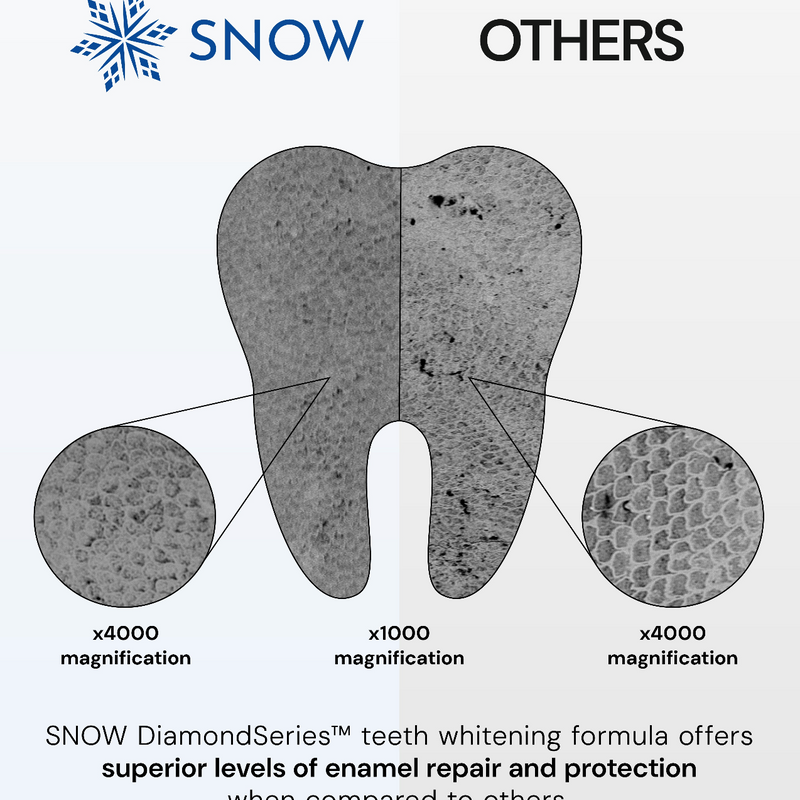Are you facing wisdom teeth eruption? There are advantages to having your four wisdom teeth coming in, grow in, or erupt, sometimes known as the third molar teeth. Wisdom teeth often develop after age 18 and, if properly positioned, can make biting simpler or cover the space left by a missing molar. If you require a dental bridge, wisdom teeth can also support the surgery easier.
However, wisdom teeth eruption is not always a simple process. When your third molars don't have enough room to grow in properly, they may just partially erupt, creating difficult-to-reach areas between your teeth. This creates various dental problems, such as being a breeding ground for germs, and pain, can trigger headaches, crowding nearby teeth, and not leaving enough room for good dental hygiene, which can cause jaw pain, gum disease, and swollen gums.
What is the purpose of wisdom teeth growing in?
Typically, adult teeth serve little use other than providing an extra pair of molars on either side of the mouth to help crush food. However, because they are the last teeth to grow (typically between the ages of 17 and 24), these four extra teeth may cause problems if they don't have enough area to emerge.
According to molar clinical studies, vitamin K2, crucial for jaw development and growth, is frequently deficient in modern diets. As a result, jaw underdevelopment is frequent in today's population, which is one of the reasons why many dentists believe there is not enough room for wisdom teeth growing in correctly.
Dental professionals also believe other plausible factors may cause the underdeveloped jaw, such as decreasing nursing rates and a soft-food-based human diet in infants.
You can also get impacted wisdom teeth when they grow without enough space to develop properly. As a result, they can become stuck under the gums or grow sideways, causing various dental health problems and problems with future extraction.
Wisdom tooth dental complications
Humans and their jaws have shrunk over time. This evolutionary development is most likely due to several factors. Some experts believe that as the human brain became larger throughout time, the jaw shrank to make room. Most problems with a wisdom tooth coming in are caused by the fact that they do not fit.
Wisdom teeth, whether visible or not, can create oral health issues. Impacted teeth are teeth that have not erupted through the gums. This can sometimes create even more complications than visible wisdom teeth.
How can you tell whether your wisdom teeth are erupting?
It is critical to recognize the usual indicators of wisdom tooth development. While some people's third molars will erupt normally, it is typical to encounter symptoms such as swelling, discomfort, jaw pain, teeth in the wrong position, damage to adjacent teeth, or infection. But you may also even have asymptomatic impacted wisdom teeth where you do not notice a problem. Suppose you believe your wisdom teeth are growing in. In that case, you should see your dentist immediately so they may be removed if required before they pose significant problems to your oral health.
It is often wise to visit a dentist or oral surgeon as a preventative measure when your third molars start coming in, even if you do not experience severe pain or discomfort, just to ensure all is progressing well.
Symptoms of impacted wisdom teeth
Common symptoms of wisdom tooth development include:
Mouth swelling and sensitivity
Suppose you detect swelling towards the back of your mouth on one or both sides, typically accompanied by slight discomfort. In that case, this indicates that your wisdom teeth are developing.
If you notice your third molars coming in at this point, see your dentist to evaluate if they are in a healthy position to neighboring teeth. Your dentist can use x-rays to see if there is enough space for your wisdom teeth to grow without damaging or crowding your other teeth.
Migraines
Sometimes, like with migraines, new molar growth clues are more subtle. Wisdom teeth stuck beneath the gum or in the incorrect place can create overcrowding. The associated strain and tension in the soft tissue and jaw can induce headaches.
If you already have headaches regularly, this symptom may go unrecognized. Even if you aren't having any problems, you should continue to see your dentist regularly so that x-rays can detect impacted wisdom teeth early and establish the best course of action for wisdom tooth pain relief.
Virus infection
When your wisdom teeth partly erupt, germs can develop and cause illnesses. How does this occur? Even if you brush and floss correctly twice a day, you may still feel this discomfort due to how impacted teeth alter teeth alignment.
When wisdom teeth emerge partially through the gums, they frequently create a gap where food can quickly become caught. Because of how tightly the teeth are packed against one other, removing food lodged in this gap might be difficult. The infection induced by this is known as pericoronitis, one of the most significant symptoms that makes extraction time-sensitive for surgical removal by oral surgeons.
You may have pericoronitis if you experience significant discomfort near your back teeth, swelling of your gum tissue, pain or unpleasant taste when swallowing, or pus discharge from your gum tissue. Following your dentist's instructions for keeping your mouth clean at this stage is essential to avoid wisdom tooth surgery if possible.
Causes of an impacted wisdom tooth
Third molars get impacted when insufficient space for them to come in or erupt or grow correctly when the wisdom tooth pushes on other parts of your mouth.
According to third molar clinical studies, wisdom teeth typically appear between 17-25. Some people's wisdom teeth erupt and then line up with other teeth below the second molars. However, in many situations, the mouth is often too crowded for wisdom molars to form correctly. The crowded third teeth get stuck (impacted).
Impacted wisdom teeth may emerge partially, revealing parts of the crown, or they may never break the gums and become fully impacted. The tooth, whether wholly or partly impacted, may:
- Grow at an angle in a forward direction toward other molars
- Grow at the opposite angle toward the rear of the mouth
- Wisdom teeth grow at the right angle toward the other teeth
Like other teeth, they grow straight up and down but remain locked within the jawbone.
Complications
A wisdom tooth eruption can cause a variety of dental issues, including:
Other teeth being damaged
If the impacted wisdom tooth is pressed against the second molar, the nearby molar may be damaged or infected. The pressure can also crowd the other teeth and necessitate dental procedures to correct the other teeth.
Cysts
Wisdom teeth grow in a sac within the jaw. The sac then fills with fluid and may develop a cyst, which then causes damage to the teeth, jawbone, and nerves. In rare cases, a tumor forms, which is typically noncancerous. This condition often needs tissue and bone removal to prevent other health conditions.
Decay
When a wisdom tooth grows, resulting in a tooth that is partially impacted, it tends to be more susceptible to tooth decay or caries than a regular tooth. This problem is most likely due to the complication of cleaning back molars and the ease with which food and germs become stuck between the gum and the partially erupted tooth.
Dental illness
The difficulty of cleaning partially erupted areas raises the chance of getting pericoronitis, an inflammatory gum condition in that location.
Infection of the wisdom teeth
Depending on the severity and position of the tooth, a wisdom tooth infection can be treated in a variety of methods. To treat the illness, your dentist will first prescribe antibiotics. Once the region has been cleared of infection, the best strategy to avoid reinfection is through dental treatment or removal of the wisdom tooth.
To reduce the number of areas in which germs may grow, your dentist may opt to repair the tooth by filling up a cavity or fissures surrounding the eruption site.
In certain circumstances, surgery, including partial or complete tooth removal, is the most effective approach to maintain the region clean and prevent future suffering.
Your dentist can help you sort through all of your alternatives for your specific mouth.
When should you have wisdom teeth removed?
Wisdom teeth are the last of your 32 teeth to emerge from behind the gums, including baby teeth. They are unlikely to pose problems if their location and alignment are excellent. A wisdom tooth does not need to be extracted in this circumstance.
Nonetheless, wisdom teeth frequently begin to protrude laterally. Due to a shortage of space may become stuck beneath the gum line, affecting the alignment of surrounding teeth. If left untreated, this wisdom tooth may develop cysts or tumors, eroding the jaw bone and causing dental rot.
Finally, dental hygiene may become more challenging if a wisdom tooth partially emerges. Bacteria can enter the gums via such teeth, resulting in an oral infection that produces stiffness, discomfort, swelling, and poor breath.
Not surprisingly, many dentists advocate wisdom teeth removal if they perceive the possibility of these dental issues.
Recovery from wisdom teeth extraction
Because your mouth is more susceptible to infection following surgery, you must follow your dentist's post-surgical care guidelines. This will most likely entail using salt water rinses, avoiding smoking, and eating meals without small particles, such as seeds, that might become lodged in your healing gums.
Wisdom teeth surgery recovery usually takes a few days, although some pain might continue for up to a week. Ask your dentist about which pain relievers are safe to use.
Recovery after wisdom tooth removal can be painful. Still, for many individuals, it's a strategic way to avoid other dental surgeries in the long term.
Frequently Asked Questions
How long does it take for wisdom teeth to emerge?
Wisdom teeth usually appear between the ages of 17 and 25. However, not everyone gets them at the same time. Wisdom teeth can take years to come through the gums fully, or they may never erupt.
What should I do when my wisdom teeth erupt?
When a person's wisdom teeth emerge, there are practical steps they may take to reduce the likelihood of gum infection. Maintaining proper dental hygiene by brushing teeth twice a day, flossing, and using mouthwash can help minimize the germs that cause infections in the mouth.
Do wisdom teeth hurt when they come in?
If your wisdom teeth have ample room and grow straight, you may never experience pain. If your wisdom teeth emerge and there isn't enough room in your mouth, they can cause severe discomfort, inflammation, and irritation.
How long does wisdom teeth removal pain last?
The socket usually takes around two weeks to a month to heal. The pain will worsen in the first few days after surgery, but it should improve in the coming days.
Summary
Any of the above symptoms may indicate an impacted wisdom tooth. You should arrange a check-up with a dental facility to see if you need a wisdom tooth extraction. While proper oral hygiene and cold packs may temporarily reduce the discomfort, neglecting the signs of wisdom teeth can only result in significant possible health consequences for you.


























